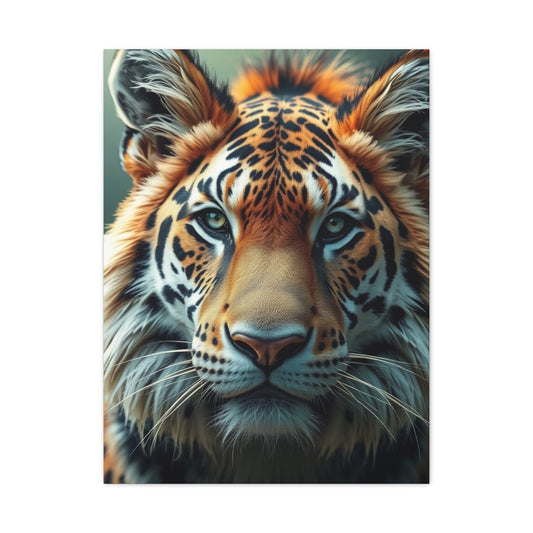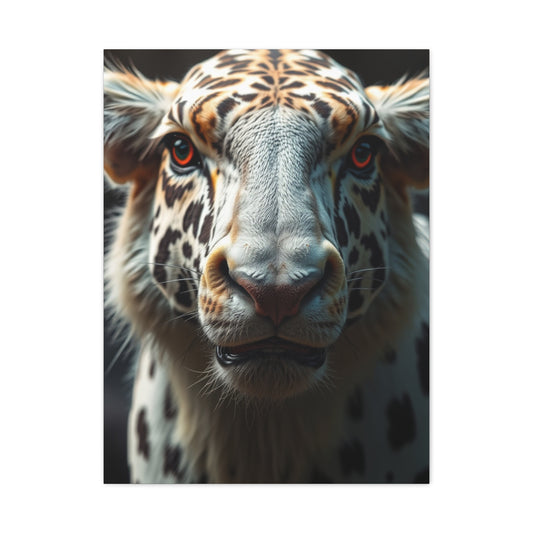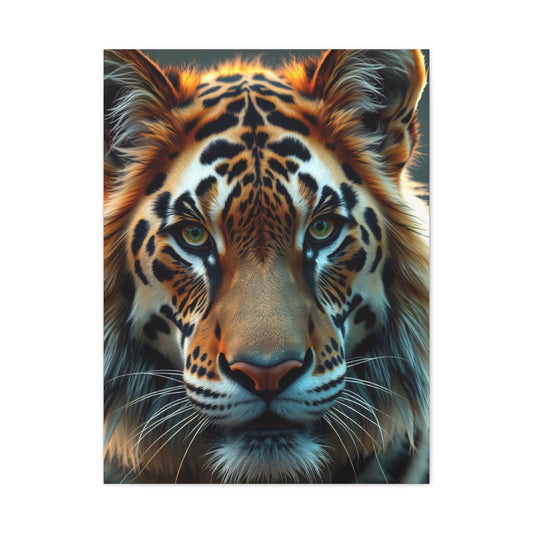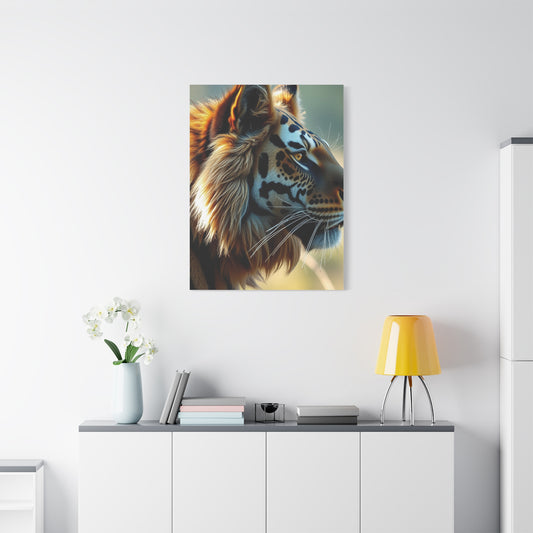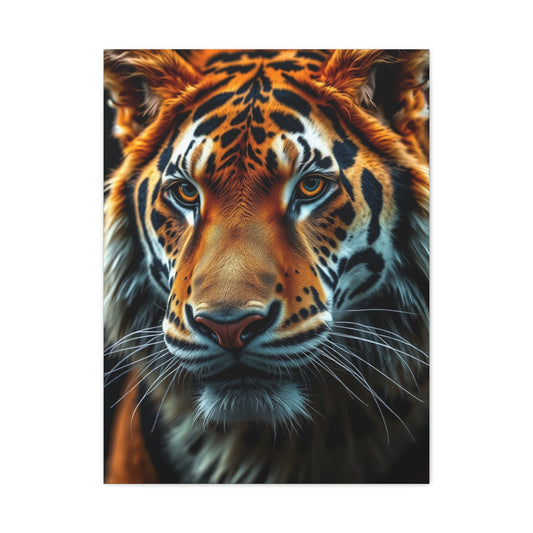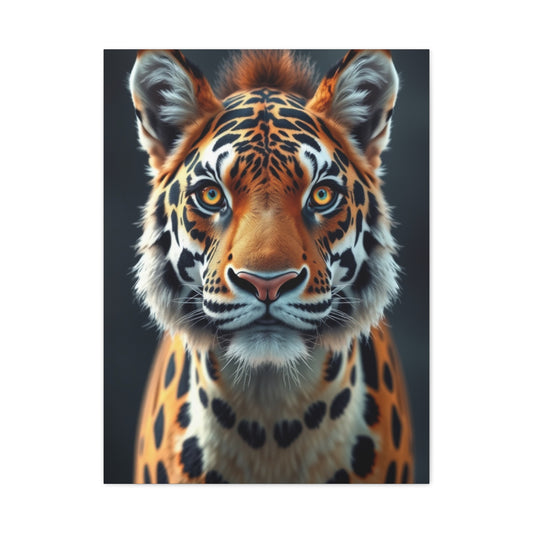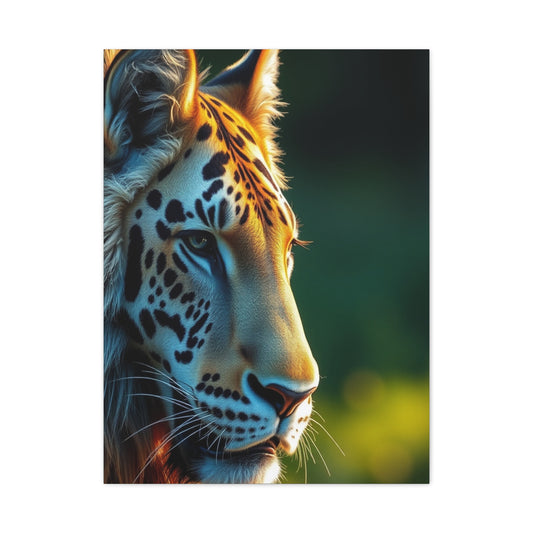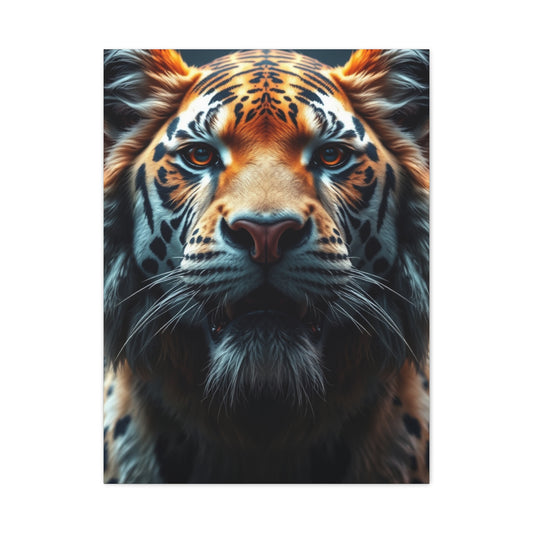Collection: Animals Wildlife Wall Art
Ultimate Guide to Creating Stunning Wall Art with Animals Wildlife Wall Art
Black and white animal photography represents one of the most enduring and sophisticated forms of visual expression in contemporary interior design. This monochromatic approach to capturing wildlife has deep roots that extend back to the earliest days of photography when color film remained unavailable. The absence of chromatic elements in these images creates a profound visual impact that transcends temporal boundaries, establishing connections between viewers and subjects that colorized versions often fail to achieve.
The evolution of this artistic medium demonstrates how photographers learned to master the interplay between light and shadow, developing techniques that would define the aesthetic principles we celebrate today. Early wildlife photographers faced immense challenges when working exclusively in grayscale, requiring them to understand tonal relationships, contrast management, and compositional balance in ways that modern practitioners continue to study and emulate.
The Historical Significance of Black and White Animal Imagery
When examining the historical context of monochromatic animal photography, we discover that many renowned naturalists and photographers chose to work within these constraints even after color photography became widely accessible. This deliberate choice speaks to the inherent power of black and white imagery to convey emotion, drama, and artistic vision without relying on the distractions that vibrant hues might introduce.
The documentary tradition within wildlife photography established many of the foundational principles that contemporary artists continue to employ. Legendary photographers who ventured into remote wilderness areas with heavy equipment and limited resources demonstrated that capturing the essence of wild creatures required patience, skill, and an intuitive understanding of animal behavior combined with masterful control over photographic variables.
These historical precedents inform modern approaches to creating wall art that resonates with viewers on multiple levels. The techniques developed by pioneering photographers provide blueprints for contemporary artists seeking to create compelling visual narratives through monochromatic animal imagery.
Understanding this heritage helps explain why black and white animal pictures maintain their popularity in residential and commercial spaces. The timeless quality inherent in these images ensures they remain relevant regardless of changing interior design trends or shifting aesthetic preferences.
The Science Behind Visual Impact in Monochromatic Wildlife Art
The psychological mechanisms that make black and white animal photography so compelling involve complex interactions between human visual perception and emotional response systems. Research in neuroscience and visual psychology reveals that monochromatic images engage different neural pathways compared to their colorized counterparts, often resulting in more focused attention and deeper emotional engagement.
When chromatic information is removed from an image, the human brain compensates by paying increased attention to other visual elements including texture, form, composition, and tonal relationships. This heightened focus creates opportunities for photographers and interior designers to guide viewer attention more effectively, creating visual experiences that feel both intimate and powerful.
The absence of color forces observers to engage with fundamental artistic elements that might otherwise be overlooked. Contrast becomes more apparent, leading edges appear sharper, and subtle gradations in tone create depth and dimension that can rival or exceed the impact of full-color imagery. These effects contribute to the sophisticated appearance that makes monochromatic animal art particularly suitable for upscale residential and professional environments.
Scientific studies examining eye movement patterns reveal that viewers spend more time examining black and white photographs compared to color versions of identical subjects. This increased viewing duration suggests that monochromatic images provide richer visual experiences that reward prolonged observation, making them ideal choices for spaces where people spend considerable time.
The neurological basis for these preferences involves the way our brains process visual information. Color perception requires significant cognitive resources, and when these demands are eliminated, mental energy can be redirected toward appreciating subtler aspects of composition, lighting, and subject matter. This cognitive shift often results in more contemplative viewing experiences.
Understanding these scientific principles helps explain why interior designers consistently recommend black and white animal photography for spaces intended to promote relaxation, reflection, or focused work. The calming effect of monochromatic imagery stems from its ability to reduce visual overstimulation while maintaining artistic interest and emotional resonance.
Exploring Different Styles and Approaches to Animal Photography
Contemporary black and white animal photography encompasses numerous stylistic approaches, each offering unique aesthetic qualities and emotional impacts. Portrait-style wildlife images focus intensely on individual creatures, capturing intimate details of expression, texture, and character that reveal the personality and dignity of wild animals. These close-up perspectives create powerful connections between viewers and subjects, transforming gallery walls into windows toward the natural world.
Environmental portraits represent another significant category within this medium, showing animals within their natural habitats while maintaining the dramatic impact of monochromatic presentation. These images tell broader stories about wildlife behavior, habitat relationships, and the interconnections between species and their environments. The absence of color allows viewers to focus on compositional elements that might otherwise be obscured by complex chromatic relationships.
Action photography in black and white creates particularly striking wall art because motion blur, frozen movement, and dynamic poses become primary visual elements. Without color to provide context or distraction, the pure energy and grace of animal movement takes center stage. These images work exceptionally well in spaces designed to inspire activity or motivation.
Abstract approaches to wildlife photography push creative boundaries by focusing on patterns, textures, and forms found in animal subjects. Close-up views of fur patterns, feather arrangements, or anatomical details create compelling geometric compositions that function as both representational and abstract art simultaneously. These pieces appeal to viewers who appreciate both natural subjects and contemporary artistic expression.
Documentary-style black and white animal photography maintains journalistic integrity while creating emotionally engaging imagery. These photographs often capture behavioral moments, family interactions, or environmental challenges faced by wildlife populations. The monochromatic presentation lends gravitas to these subjects, encouraging viewers to consider conservation issues while appreciating artistic merit.
Fine art interpretations of animal subjects push creative boundaries through experimental techniques including multiple exposures, intentional motion blur, or alternative printing processes. These approaches create unique pieces that stand apart from conventional wildlife photography while maintaining strong connections to natural subjects.
The Role of Composition in Creating Compelling Animal Art
Compositional mastery forms the foundation of exceptional black and white animal photography intended for wall art display. Without color to provide visual interest or guide attention, photographers must rely entirely on arrangement, balance, and visual flow to create compelling images. The rule of thirds becomes particularly important in monochromatic work, helping to establish focal points and create dynamic tension within the frame.
Leading lines play crucial roles in black and white animal compositions, drawing viewers' eyes toward primary subjects while creating sense of depth and movement. Natural elements such as shorelines, fallen logs, rock formations, or vegetation patterns serve as compositional tools that enhance rather than distract from animal subjects. Skilled photographers learn to recognize and utilize these environmental features during field work.
Negative space assumes heightened importance in monochromatic animal photography because empty areas become active compositional elements rather than mere backgrounds. Strategic use of negative space can create feelings of isolation, freedom, majesty, or contemplation depending on how these areas relate to animal subjects. This relationship between filled and empty space often determines whether finished pieces feel balanced and professionally composed.
Framing techniques using natural elements create intimate viewing experiences that draw observers into photographic scenes. Tree branches, rock formations, or architectural elements can frame animal subjects while adding layers of visual interest to compositions. These framing devices work particularly well in black and white imagery because tonal contrasts help define boundaries without relying on color differences.
Depth of field control becomes a powerful compositional tool in monochromatic animal photography. Shallow focus can isolate subjects against softly blurred backgrounds, while extensive depth of field allows entire scenes to remain sharp and detailed. The choice between these approaches depends on intended emotional impact and the story being told through each individual image.
Symmetrical and asymmetrical balance both offer opportunities for creating visually satisfying compositions. Symmetrical arrangements often convey stability and tranquility, while asymmetrical compositions can suggest movement, tension, or dynamic energy. Understanding when to employ each approach helps photographers create pieces that complement their intended display environments.
Understanding Light and Shadow in Monochromatic Wildlife Images
Mastering light and shadow relationships represents perhaps the most critical skill required for creating exceptional black and white animal photography. Without color to provide visual separation between elements, tonal contrasts must carry the entire burden of defining form, creating depth, and establishing mood. This dependence on luminosity makes lighting conditions absolutely crucial for successful monochromatic wildlife imagery.
Golden hour lighting, occurring shortly after sunrise and before sunset, provides ideal conditions for black and white animal photography. During these periods, warm directional light creates strong contrast between illuminated and shadowed areas while maintaining detail in both highlights and shadows. The low angle of golden hour sun also creates rim lighting effects that separate subjects from backgrounds through luminous outlines.
Overcast conditions offer different advantages for monochromatic animal photography, providing soft, even illumination that reveals subtle details without harsh contrasts. This type of lighting works particularly well for intimate portraits or behavioral documentation where even exposure across the entire subject is desirable. Cloud cover acts as a natural diffuser, creating gentle gradations between light and dark areas.
Backlighting creates dramatic silhouette effects that can transform ordinary animal encounters into striking artistic statements. When subjects are positioned between camera and light source, their forms become bold graphic elements against brighter backgrounds. This technique works especially well with animals that have distinctive profiles or interesting appendages such as antlers, tails, or distinctive ear shapes.
Side lighting reveals texture and dimension through the interplay of highlights and shadows across animal fur, feathers, or skin. This lighting direction creates three-dimensional modeling that helps subjects appear to emerge from flat photographic surfaces. Side lighting also emphasizes the natural patterns and markings that make each species unique and visually interesting.
Dramatic lighting conditions such as storms, fog, or unusual weather patterns provide opportunities for creating moody, atmospheric black and white animal images. These conditions often produce striking contrasts and mysterious ambiances that elevate wildlife photography beyond simple documentation toward fine art expression. However, these conditions also present technical challenges that require advanced photographic skills and appropriate equipment.
Selecting the Perfect Animal Subjects for Wall Art
Choosing appropriate animal subjects for black and white wall art requires consideration of multiple factors including visual impact, emotional resonance, and compatibility with intended display environments. Large mammals often make compelling subjects because their size and presence translate well to wall display, creating focal points that command attention without overwhelming spaces. Species such as elephants, horses, bears, and big cats possess inherent majesty that translates beautifully to monochromatic presentation.
Birds offer exceptional opportunities for black and white wall art because their diverse forms, behaviors, and habitats provide endless creative possibilities. Raptors such as eagles, hawks, and owls possess intense expressions and striking profiles that create powerful portrait opportunities. Waterfowl, songbirds, and shorebirds each offer unique characteristics that appeal to different aesthetic preferences and interior design schemes.
Domestic animals including horses, cattle, and farm animals make excellent subjects for black and white wall art, particularly in rural or rustic interior design contexts. These subjects often evoke feelings of nostalgia, simplicity, and connection to agricultural traditions that resonate with many viewers. The familiar nature of domestic animals also makes them accessible to audiences who might feel intimidated by exotic wildlife imagery.
Marine life presents unique opportunities for creating distinctive black and white wall art that stands apart from more common terrestrial subjects. Whales, dolphins, seals, and sea birds offer graceful forms and interesting behaviors that translate beautifully to monochromatic presentation. Underwater photography requires specialized skills and equipment, making these images particularly valuable for collectors seeking unique pieces.
Exotic wildlife from international locations provides opportunities for creating conversation-starting wall art that reflects global travel experiences or conservation interests. Images of African safari animals, Arctic species, rainforest creatures, or desert inhabitants can transport viewers to distant locations while showcasing the incredible diversity of life on Earth.
Young animals or family groups often create emotionally engaging wall art that appeals to viewers on instinctive levels. Images showing parental care, playful behavior, or vulnerable moments tap into universal themes that transcend species boundaries. These subjects work particularly well in residential settings where emotional warmth is desired.
Creating Emotional Connections Through Animal Photography
The power of black and white animal photography to create deep emotional connections stems from its ability to reveal universal themes that resonate across species boundaries. Images capturing parental devotion, playful interaction, determination, or vulnerability tap into fundamental emotional responses that viewers recognize from their own experiences. These connections transform decorative wall art into meaningful personal statements that reflect values and emotional priorities.
Anthropomorphic qualities in animal subjects create particularly strong viewer connections because they allow people to see reflections of human characteristics in wildlife subjects. Expressions of curiosity, contentment, alertness, or affection become immediately recognizable when stripped of chromatic distractions and presented in stark monochromatic clarity. These emotional bridges help explain why certain animal images become beloved family treasures that maintain their impact over decades.
The storytelling potential within individual animal photographs allows viewers to construct narratives that extend beyond captured moments. A single image might suggest entire life stories, seasonal cycles, family relationships, or survival challenges that engage imagination and empathy. This narrative quality makes animal wall art particularly suitable for spaces where contemplation and reflection are valued.
Cultural symbolism associated with different animal species adds layers of meaning to black and white photography that viewers bring from their own backgrounds and experiences. Eagles represent freedom and strength, wolves suggest loyalty and wildness, horses embody grace and power, while owls symbolize wisdom and mystery. Understanding these symbolic associations helps in selecting pieces that align with personal values or desired room atmospheres.
The meditative quality of observing black and white animal photography stems from its ability to slow down busy minds and encourage present-moment awareness. Unlike complex colorful images that might overstimulate visual senses, monochromatic animal art invites prolonged observation and peaceful contemplation. This calming effect makes such pieces particularly valuable in bedrooms, meditation spaces, or home offices where stress reduction is important.
Seasonal and temporal themes within animal photography create connections to natural rhythms that many people crave in increasingly urbanized lifestyles. Images showing migration patterns, winter adaptations, breeding behaviors, or seasonal coat changes remind viewers of the cyclical nature of life and their own connections to natural world processes.
Camera Settings and Equipment for Optimal Results
Achieving professional-quality black and white animal photography requires mastery of specific camera settings and equipment choices that differ significantly from color photography approaches. ISO sensitivity becomes particularly crucial because monochromatic images depend entirely on tonal relationships rather than chromatic variation to create visual interest and separation between elements. Higher ISO settings that might produce unacceptable noise in color work can actually enhance texture and character in black and white imagery.
Aperture selection directly impacts the storytelling potential of animal photographs through depth of field control. Wide apertures create shallow focus that isolates subjects against softly blurred backgrounds, while smaller apertures maintain sharpness throughout entire scenes. Understanding when to employ each approach requires consideration of subject matter, available light, and intended emotional impact of finished pieces.
Shutter speed choices must account for animal behavior patterns and movement characteristics. Fast shutter speeds freeze action and capture sharp details in moving subjects, while slower speeds can create intentional motion blur that suggests movement and energy. The key lies in matching technical settings to artistic vision while maintaining enough technical quality to support large-scale printing for wall display.
Lens selection profoundly influences the character and impact of animal photography. Telephoto lenses compress perspective and create intimate portraits from safe distances, while wide-angle lenses capture environmental context and habitat relationships. Macro lenses reveal intricate details of smaller subjects, opening creative possibilities for abstract compositions based on natural patterns and textures.
Tripod stability becomes essential for sharp images, particularly when working in low light conditions or using long telephoto lenses. Carbon fiber tripods provide necessary stability while remaining portable enough for field work in remote locations. Ball heads offer quick adjustments for following moving subjects, while gimbal heads provide smooth tracking for larger telephoto lenses.
Filtering systems designed specifically for black and white photography can enhance contrast and tonal separation during capture. Polarizing filters reduce reflections and enhance sky contrast, while neutral density filters enable longer exposures for creative motion effects. Understanding how different filters affect monochromatic imagery helps photographers make informed decisions during field work.
Post-Processing Techniques for Stunning Black and White Images
Digital post-processing represents a crucial phase in creating exceptional black and white animal wall art, offering opportunities to enhance the natural drama and emotional impact captured during initial photography sessions. Converting color images to monochrome requires understanding how different color channels contribute to final tonal relationships, allowing photographers to emphasize specific aspects of animal subjects through selective channel mixing.
Contrast adjustments form the foundation of effective black and white processing, creating separation between tonal regions that define form and establish visual hierarchy within compositions. Local contrast enhancements using techniques such as unsharp masking or clarity adjustments can reveal texture details in animal fur, feathers, or skin without affecting overall tonal balance.
Selective adjustments using masks and layer techniques allow photographers to optimize different areas of images independently. Animal subjects might require different processing treatments compared to background elements, sky regions, or environmental details. This selective approach ensures that finished pieces maintain natural appearance while maximizing visual impact.
Dodging and burning techniques derived from traditional darkroom practices remain essential tools for guiding viewer attention and creating three-dimensional modeling in flat photographic prints. These techniques allow photographers to subtly lighten or darken specific areas to enhance the natural play of light and shadow that gives subjects their dimensional quality.
Grain and texture additions can enhance the organic feel of black and white animal photography while adding visual interest to large print formats. However, these effects must be applied judiciously to avoid overwhelming fine details or creating artificial appearances that detract from natural subject matter.
Split-toning techniques involve adding subtle color casts to highlight and shadow regions, creating warmer or cooler overall tonalities that can enhance mood and emotional impact. Even though final images remain essentially monochromatic, these subtle tonal shifts can significantly affect viewer perception and emotional response.
Understanding Print Quality and Paper Choices
Print quality forms the crucial bridge between digital files and physical wall art, requiring careful attention to technical specifications and material choices that affect both visual impact and longevity. Paper selection significantly influences the character and mood of black and white animal photography, with different surfaces creating distinct aesthetic effects that complement various interior design approaches.
Fiber-based papers provide the most archival stability and finest tonal gradation for black and white photography, offering subtle texture variations that enhance the organic nature of animal subjects. These papers accept ink differently than resin-coated alternatives, creating deeper blacks and more nuanced highlight details that are particularly important for monochromatic imagery.
Matte surfaces reduce reflections and provide viewing flexibility under various lighting conditions, making them ideal choices for locations where glare might be problematic. The subtle texture of matte papers also complements the natural textures found in animal subjects, creating visual harmony between medium and subject matter.
Glossy surfaces maximize tonal range and create dramatic impact through enhanced contrast between deepest shadows and brightest highlights. These surfaces work particularly well for images with strong graphic elements or bold compositional arrangements that benefit from increased visual punch.
Baryta papers offer compromise solutions that combine some advantages of both matte and glossy surfaces while providing exceptional archival stability. The slight sheen of baryta coating enhances tonal depth without creating problematic reflections, making these papers popular choices for gallery and museum exhibitions.
Print sizing considerations must account for viewing distances and room proportions to ensure optimal visual impact. Larger prints create immersive viewing experiences but require higher resolution source files and more careful attention to print quality details. Smaller prints might be more appropriate for intimate spaces or groupings where multiple images work together.
Framing and Mounting Considerations for Professional Display
Proper framing and mounting techniques protect valuable photographic prints while enhancing their visual presentation and integration with interior design schemes. Mat selection plays crucial roles in establishing visual relationships between images and surrounding spaces, with neutral tones typically working best for black and white animal photography to avoid competing with monochromatic imagery.
Glass selection affects both protection and viewing quality, with options ranging from standard glass to museum-quality materials with UV filtering and anti-reflective coatings. Conservation-grade materials ensure long-term stability while specialized coatings reduce reflections that might interfere with viewing under various lighting conditions.
Mounting techniques must balance aesthetic considerations with archival stability requirements. Dry mounting provides flat, wrinkle-free presentation but may not meet conservation standards for valuable prints. Museum mounting using acid-free materials and reversible techniques offers maximum protection while maintaining professional appearance standards.
Frame material choices should complement both image content and room design without overwhelming photographic subjects. Natural wood finishes work well with wildlife subjects, while metal frames provide contemporary appearances suitable for modern interior design schemes. Black frames often work well with monochromatic imagery because they create visual continuity without introducing competing elements.
Spacing considerations become important when displaying multiple pieces together, requiring careful attention to visual balance and flow between individual images. Consistent spacing creates formal gallery wall arrangements, while varied spacing can create more dynamic, organic groupings that reflect natural themes.
Lighting design significantly impacts the viewing experience of framed animal photography, requiring consideration of both illumination intensity and direction. Track lighting or picture lights can enhance contrast and detail revelation while avoiding hotspots or uneven illumination that detract from viewing quality.
Size and Scale Considerations for Different Spaces
Selecting appropriate print sizes for black and white animal photography requires careful consideration of viewing distances, room proportions, and intended visual impact within specific interior design contexts. Large-scale prints create immersive viewing experiences that can transform entire rooms, making animal subjects appear almost life-sized and creating powerful focal points that dominate attention.
Small intimate prints work well in residential settings where viewers can examine fine details up close, revealing subtle textures and expressions that might be lost in larger formats. These sizes also work well for groupings where multiple images tell broader stories about animal behavior, habitat relationships, or photographer experiences.
Medium-sized prints often provide optimal balance between impact and practicality, offering sufficient detail revelation while remaining manageable for most residential and commercial display situations. These sizes also offer more flexibility for future relocations or interior design changes that might require artwork adjustments.
Room proportion relationships significantly influence optimal print sizing decisions. High ceilings can accommodate larger prints without creating overwhelming effects, while smaller spaces benefit from more modestly sized pieces that maintain comfortable viewing experiences. The distance between primary viewing positions and wall display locations also affects size selection.
Grouping strategies allow smaller individual prints to create collective impact that rivals larger single pieces while providing more flexibility for arrangement and future modifications. Series of related images can tell complete stories while offering opportunities for creative spacing and arrangement that enhance overall visual appeal.
Ceiling height considerations affect both print sizing and hanging height decisions, with higher ceilings allowing for larger prints and more flexible vertical positioning. Standard residential ceilings require more careful consideration of proportional relationships to avoid overwhelming room occupants or creating awkward viewing angles.
Color Theory Applications in Monochromatic Work
Understanding color theory principles remains crucial for creating effective black and white animal photography because the translation from color to monochrome depends on relationships between different hues and their resulting tonal values. Colors that appear distinctly different in chromatic images might translate to similar gray tones, potentially causing subjects to blend into backgrounds or lose definition in monochromatic conversion.
Red and green colors often translate to similar mid-tone gray values, requiring special attention during conversion processes to maintain separation between subjects and backgrounds. Using channel mixing techniques or selective adjustments can help maintain visual distinction that existed in original color captures.
Yellow and blue typically translate to lighter and darker gray tones respectively, creating natural contrast relationships that work well for monochromatic animal photography. Understanding these translation patterns helps photographers visualize final results during field work and make composition decisions accordingly.
Complementary color relationships in original scenes often create pleasing contrast relationships in black and white conversions, suggesting that photographers should seek these color combinations even when planning monochromatic final presentations. This approach ensures maximum tonal separation and visual interest in finished pieces.
Analogous color schemes in natural settings might create subtle tonal variations that enhance texture and detail revelation in black and white imagery. These gentle transitions can create sophisticated gray scale progressions that add depth and dimension to animal subjects.
Color temperature variations in lighting conditions affect not only overall mood but also the relative translation of different colored elements within animal subjects and their environments. Understanding these relationships helps photographers make informed decisions about lighting conditions and post-processing approaches.
Building a Cohesive Collection of Animal Art
Creating cohesive collections of black and white animal photography for wall art display requires consideration of thematic relationships, stylistic consistency, and visual flow between individual pieces. Subject matter relationships can be based on species similarities, habitat connections, behavioral themes, or geographic origins that create logical connections between disparate images.
Stylistic consistency involves maintaining similar approaches to composition, lighting treatment, and post-processing techniques across multiple pieces to ensure visual harmony when displayed together. This doesn't require identical treatment of every image but rather establishing recognizable aesthetic signatures that unite different subjects under common artistic vision.
Tonal range consistency helps ensure that different pieces work well together without creating jarring contrasts or visual competition between individual images. Some variation in tonal character can add interest to collections, but extreme differences in contrast or brightness can create viewing problems when pieces are displayed in proximity.
Scale relationships between subjects depicted in different images affect visual balance when pieces are displayed together. Mixing extreme close-ups with wide environmental shots can create dynamic tension, while maintaining similar scales across multiple pieces creates more harmonious viewing experiences.
Narrative connections between images can transform individual pieces into components of larger stories that engage viewers on deeper levels. These connections might involve life cycle documentation, family relationships, seasonal changes, or behavioral sequences that unfold across multiple frames.
Exhibition strategies for displaying collections require careful attention to spacing, arrangement, and lighting to maximize individual impact while creating cohesive viewing experiences. Linear arrangements work well for narrative sequences, while grid patterns can emphasize formal relationships between pieces.
Living Room Display Strategies and Visual Impact
Living rooms represent the most versatile spaces for displaying black and white animal photography, offering opportunities to create dramatic focal points that reflect personal interests while complementing diverse interior design styles. The central role of living areas in daily family life makes artwork selection particularly important, as these pieces will be viewed frequently by residents and guests alike, requiring careful consideration of both aesthetic appeal and long-term visual satisfaction.
Large-scale animal portraits work exceptionally well above seating areas, creating commanding focal points that anchor furniture arrangements while providing engaging conversation starters for social gatherings. The monochromatic nature of these pieces allows them to complement virtually any color scheme without creating visual conflicts, making them ideal choices for rooms that undergo periodic decorating updates or seasonal color changes.
Gallery wall arrangements offer opportunities to combine multiple smaller animal photographs into cohesive displays that tell broader stories about wildlife, conservation, or photographer experiences. These groupings can incorporate different species, habitats, or behavioral moments that create visual interest through variety while maintaining thematic unity through consistent monochromatic treatment and framing approaches.
Lighting considerations become particularly important in living rooms where artwork must remain visible and engaging under various illumination conditions throughout daily use cycles. Natural daylight, evening artificial lighting, and accent illumination all affect how black and white photography appears, requiring careful attention to positioning and supplemental lighting design to maintain optimal viewing conditions.
Furniture relationship strategies help integrate animal photography seamlessly into existing room arrangements without creating competition between decorative elements. The placement height, spacing from seating areas, and visual relationship to other decorative objects all influence how successfully artwork enhances rather than overwhelms interior design schemes.
Color palette coordination ensures that monochromatic animal art enhances existing room color schemes rather than creating visual discord. While black and white photography generally works well with any color combination, the specific tonal relationships within individual images can either complement or clash with surrounding design elements, requiring thoughtful selection and positioning.
Seasonal display rotation allows homeowners to maintain fresh visual interest in living spaces while accommodating larger collections of animal photography. This approach also provides opportunities to highlight different aspects of animal behavior, seasonal cycles, or habitat diversity throughout the year, creating dynamic display experiences that evolve with natural rhythms.
Bedroom Environments and Creating Peaceful Atmospheres
Bedrooms require particularly thoughtful artwork selection because these intimate spaces significantly influence mental states during vulnerable periods of rest and awakening. Black and white animal photography offers ideal solutions for bedroom environments because monochromatic imagery promotes relaxation while avoiding the visual stimulation that might interfere with sleep quality or peaceful morning routines.
Gentle animal subjects such as sleeping wildlife, peaceful grazing scenes, or serene water birds create appropriate emotional atmospheres for rest-focused spaces. These subjects convey tranquility and natural rhythm that can help establish calming bedtime routines while providing pleasant imagery for morning contemplation during wakeful transition periods.
Scale considerations become particularly important in bedrooms where artwork must provide visual interest without overwhelming intimate spaces or creating feelings of surveillance that might affect comfort levels. Medium-sized prints typically work well in most bedroom applications, providing sufficient detail for close viewing while maintaining appropriate proportional relationships with furniture and room dimensions.
Positioning strategies for bedroom animal art should account for viewing angles from bed positions, ensuring that artwork remains visible and enjoyable from primary rest positions without requiring uncomfortable neck positioning or awkward sight lines. This often means placing pieces at slightly lower heights than might be appropriate for standing viewing in other room types.
Master bedroom suites offer opportunities for more sophisticated animal photography displays that reflect adult aesthetic preferences and investment in high-quality art pieces. These spaces can accommodate larger prints or more complex gallery arrangements that might be inappropriate for children's sleeping areas or guest bedrooms with diverse user preferences.
Children's bedroom applications require different approaches that balance age-appropriate subject matter with artistic quality that can grow with developing aesthetic appreciation. Young animal photographs, family group images, or playful behavioral moments often work well for younger occupants while maintaining artistic merit that adults can appreciate.
Guest bedroom considerations should favor broadly appealing animal subjects and neutral presentation approaches that accommodate diverse visitor preferences without creating controversial or emotionally charged viewing experiences. Safe choices include domestic animals, familiar wildlife, or universally appealing subjects that are unlikely to generate negative responses.
Home Office and Study Space Applications
Home offices and study spaces present unique opportunities for incorporating black and white animal photography that can enhance focus, reduce stress, and provide inspirational visual breaks during intensive work periods. The psychological benefits of natural imagery in work environments are well-documented, making animal photography particularly valuable for home-based professionals who spend extended periods in these spaces.
Motivational animal imagery featuring subjects that embody strength, determination, or focused attention can provide subtle psychological reinforcement during challenging work tasks. Images of hunting predators, migrating animals, or creatures engaged in survival behaviors can serve as visual reminders of persistence and goal-oriented behavior that transfer to professional contexts.
Stress reduction benefits derive from the proven calming effects of nature imagery on human psychology, with animal photography providing accessible connections to natural environments that many office workers lack in urban settings. Brief contemplation of wildlife images can provide mental breaks that refresh attention and reduce accumulated work-related tension.
Positioning strategies for office animal art should account for sight lines from primary work positions, ensuring that images remain visible for brief viewing breaks without requiring significant head movement or posture changes that might interrupt workflow. Artwork placed directly in front of desk positions or slightly to one side often works well for periodic visual relief.
Productivity considerations suggest that animal imagery should be engaging enough to provide meaningful mental breaks without becoming so captivating that they create ongoing distraction from work tasks. Moderately complex compositions with interesting details work better than extremely dramatic or action-oriented subjects that might prove too stimulating for work environments.
Professional appearance standards in home offices that host client meetings or video conferences require animal photography that reflects sophisticated aesthetic judgment and professional competence. High-quality monochromatic animal art can enhance professional credibility while adding personality to spaces that might otherwise appear sterile or impersonal.
Lighting integration becomes crucial in office environments where task lighting, computer screens, and natural window light create complex illumination conditions throughout daily work cycles. Animal photography must remain clearly visible and free from problematic reflections or glare that might interfere with both work activities and artwork appreciation.
Kitchen and Dining Area Considerations
Kitchen and dining areas present specific challenges and opportunities for displaying black and white animal photography, requiring consideration of moisture, temperature variations, cooking odors, and food safety concerns while maintaining aesthetic appeal during meal preparation and dining experiences. These spaces also offer opportunities to create warm, welcoming atmospheres that enhance family gathering experiences and social entertainment.
Moisture resistance becomes a primary concern in kitchen environments where steam, splashing, and humidity fluctuations can damage photographic prints and framing materials. Protective glazing, appropriate paper choices, and strategic positioning away from cooking areas help preserve artwork while maintaining visual accessibility during daily kitchen activities.
Food safety considerations might influence animal subject selection in dining areas, with some individuals preferring to avoid predatory wildlife imagery that might seem incompatible with meal enjoyment. Domestic animals, grazing herbivores, or birds often work better in dining contexts than hunting scenes or carnivorous species that might create psychological associations that interfere with appetite.
Scale appropriateness in kitchen and dining areas typically favors smaller to medium-sized prints that can be appreciated during brief cooking activities or longer dining experiences without overwhelming spaces that serve primarily functional purposes. Oversized artwork might compete with food presentation or create cleaning difficulties around cooking areas.
Grouping strategies work particularly well in dining areas where multiple smaller pieces can create gallery wall effects that provide extended viewing interest during longer meal experiences. These arrangements can tell seasonal stories, showcase farm animal subjects, or display domestic animal personalities that enhance the homey atmosphere appropriate for family dining spaces.
Cultural considerations might influence animal subject selection in dining areas, particularly when households include members with diverse cultural backgrounds that associate specific animals with food taboos, religious significance, or cultural symbolism that could create uncomfortable dining experiences for family members or guests.
Cleaning accessibility becomes important in kitchen and dining environments where grease, food particles, and cooking vapors can accumulate on artwork surfaces over time. Frame designs and positioning choices should facilitate regular cleaning maintenance without requiring artwork removal or complex cleaning procedures that might discourage proper maintenance.
Bathroom and Personal Space Applications
Bathroom environments require special consideration for black and white animal photography due to high humidity levels, temperature fluctuations, and limited viewing opportunities that influence both artwork preservation and aesthetic effectiveness. However, these intimate personal spaces also offer opportunities for creating peaceful, spa-like atmospheres that enhance daily self-care routines and promote relaxation.
Humidity protection becomes the primary technical consideration for bathroom artwork, requiring protective glazing, moisture-resistant framing materials, and strategic positioning away from direct steam exposure from showers or baths. Even with proper protection, bathroom humidity levels remain challenging for photographic materials, requiring ongoing monitoring and maintenance attention.
Privacy considerations in bathroom spaces favor animal subjects that promote relaxation and self-reflection without creating feelings of being observed or judged during vulnerable personal care activities. Peaceful wildlife scenes, sleeping animals, or gentle domestic subjects typically work better than intense predatory gazes or alert animal expressions that might feel intrusive.
Conclusion
Scale limitations in most bathroom spaces favor smaller, more intimate print sizes that can be appreciated during brief visits or longer soaking experiences without overwhelming compact room dimensions. Larger bathrooms or spa-like master suite environments can accommodate more substantial artwork that enhances the luxury atmosphere of these expanded personal spaces.
Viewing angle considerations account for the various positions and activities that occur in bathroom spaces, ensuring that artwork remains visible and enjoyable from different vantage points including standing positions at vanities, seated positions, and relaxed soaking positions in bathtubs where angle requirements differ significantly.
Therapeutic benefits of animal imagery in bathroom environments can enhance the stress-relief and rejuvenation functions of these personal retreat spaces. Images of animals in peaceful natural settings can promote mindfulness and connection to natural rhythms that complement self-care activities and promote mental health benefits.
Maintenance requirements for bathroom animal art typically exceed those in other home environments due to ongoing exposure to moisture, temperature changes, and cleaning chemical vapors that can accelerate deterioration of both prints and framing materials. Regular inspection and preventive maintenance become essential for preserving investment in quality artwork.
Hallways and transitional spaces present unique opportunities for displaying black and white animal photography in ways that create visual continuity between different areas of homes while providing engaging viewing experiences during brief passage periods. These spaces often receive less decorating attention despite their importance in establishing overall home aesthetic character and flow between different functional areas.
Traffic flow considerations require artwork positioning that remains visible and safe during normal movement through these spaces without creating obstacles or distraction hazards. Artwork height, spacing from traffic paths, and protection from accidental contact become more important in these high-movement areas than in settled room environments.
